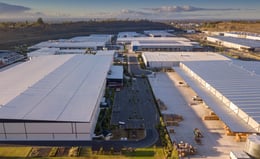Why We Believe The Gartner® Supply Chain Top 25 For 2023: Insights on Leaders Report Matters for Manufacturers
Nancy Sarpolis - July 25, 2023

Gartner® recently released its annual report, The Gartner Supply Chain Top 25 for 2023: Insights on Leaders, stating that “Each year, our experts research the supply chains of hundreds of companies. Through this work, we note the key trends that differentiate what leaders are focused on compared to their peers, where they are investing time and effort and which practices can be applied broadly.” While the vendors identified in the report represent vastly different industries—from energy management to retail to food & beverage—a unifying factor is how they are using technology to transform the way their organizations work.
Leading technologies for organizations of all sizes
The lessons from leading companies can provide a useful benchmark for manufacturers and others as they navigate their own digital transformation journeys. And, many of the same technologies employed by these Top 25 Supply Chains are available to organizations of all sizes, in all industries.
flexis AG, for example, is a leading provider of flexible information systems for supply chain management with more than 25 years of experience. The company’s comprehensive suite of supply chain and logistics management solutions help organizations streamline their operations, optimize processes and foster cross-functional collaboration.
Through integrated planning, forecasting, and demand management capabilities, flexis helps companies break down silos and establish a unified approach to supply chain management. By leveraging flexible and scalable technologies, businesses can improve communication, coordination, and information sharing across departments and units, leading to enhanced efficiency, reduced costs, and increased customer satisfaction.
From our perspective, here's a look at just three of the capabilities we identified from the report that several of the Top 25 Supply Chains reportedly use to optimize operations and how they work:
-
Scenario planning. Industry 4.0 solutions that test a variety of scenarios to optimize the planning, scheduling, and monitoring of the whole supply chain—from distribution to production to transportation—are becoming must-haves in the supply chain management toolkit. What-if scenario planning helps companies identify specific sets of uncertainties and make predictions about how they may impact business. Planners can change parameters and create different rule models and simulated scenarios. The effects of a change on production or distribution are calculated immediately and are made transparent, allowing the planner to determine the best course of action for each potential scenario to guarantee minimized damage and maximized success.
-
End-to-end visibility. Whether it is planning strategy, material procurement, order allocation, or warehouse and container management, real-time insight into the supply pipeline through intelligent solutions and software can form the basis for more efficiency and productivity for manufacturing operations. A holistic end-to-end view of the supply chain helps companies track materials and supplies, understand supplier working conditions and collect data to measure their program effectiveness. Imagine the benefit of seeing sales orders as they come in, monitoring the supply of parts in real-time, and comparing inventories, shipments, and production on a detailed dashboard that allows planners to drill down to the parts level to identify any potential problem areas before bottlenecks occur.
-
Digital twins. A digital twin is essentially a clone of the organization’s supply chain that exists as a virtual entity, mirroring the steps and processes involved from raw material delivery to the customer’s doorstep. Whereas scenario planning solutions collect data from IoT sensors and perfect their predictive capabilities over time, a digital twin of the manufacturing facility uses advanced predictive and prescriptive analytics to not just to map out machinery and production floors into digital space, but to equip those digital reproductions with a constant flow of live operational data. They create a clear link between the data that’s being collected and the application of that data to particular processes in the physical world. The planner is able to test tweaks and make adjustments to optimize the process in real-time, without affecting anything in reality.
By leveraging flexible and scalable technologies, supply chain leaders can transform how their organizations work and improve communication, coordination, and information sharing across departments and units, leading to enhanced efficiency, reduced costs, and increased customer satisfaction.
LATEST POSTS
- Understand Circular Economy in The Manufacturing Industry
- How Can Industry 4.0 IT Integration Be Achieved Smoothly?
- The Significance of Order Sequencing in Discrete Manufacturing
- How to improve your Supply Chain Management: The Power of Control Towers
- Optimizing Human Resource Scheduling in Manufacturing: A Technological Approach


